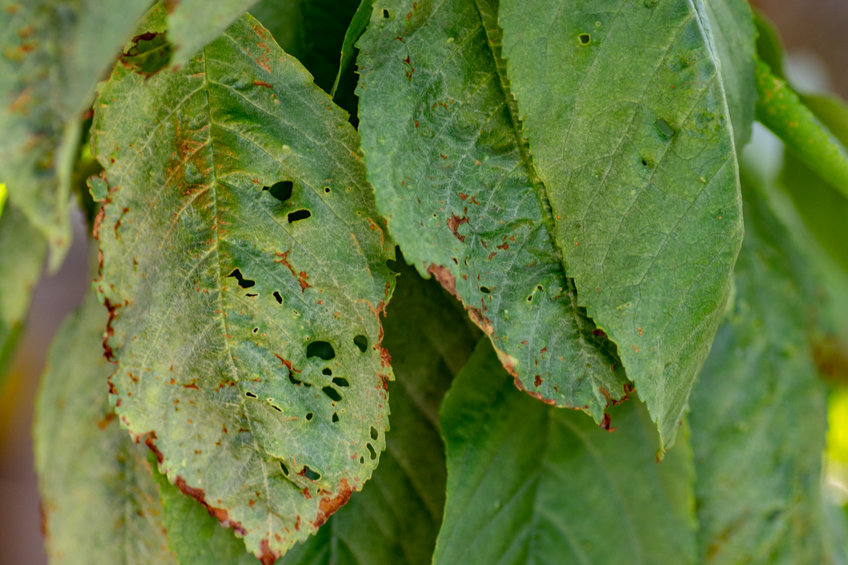
Diseased trees in your yard don’t just look bad, they can be a liability, too. A weak tree is more susceptible to falling over in a windstorm or having large branches breaking off suddenly, creating an emergency situation. Sometimes it’s hard to tell if a tree is sick or just getting old, but either way, a professional arborist or tree service is probably necessary. If you try to treat a tree and end up applying the wrong product or solution, you can end up accidentally killing the tree. Often, trees can rebound from a disease or infestation if the issue is taken care of appropriately. Here are some common tree issues we see here in Utah:
Generally, this disease is more common in humid areas, but it is still seen around Utah. Oak Root Fungus attacks the root systems of trees, which over several years, prevents them from absorbing enough nutrients. The tree becomes weak and can be blown over by strong gusts of wind that would typically not impact it if it were healthy. Millions of trees die each year from this disease.
Common in apple and pear trees, fireblight is a bacterial infection that causes new shoots to wither away rapidly. This prevents the tree from producing new fruit and makes the tree especially vulnerable to other types of diseases.
Insect infestations can kill a tree very quickly. Whiteflies and aphids are destructive to a tree because they make their homes inside and on a tree. Beetles and ants typically target already weakened trees and impact what little structural integrity it still has. Because some insects are small and hard to see, damage can get serious very quickly.
Oystershell Scale, or Lepidosaphes ulmi, is a damaging tree disease that is especially common in aspen and spruce trees but can also be found on ash, willows, poplars, and lilacs. It looks like oyster shells and develops on the bark of the tree trunk and limbs. These shells look like an infection, but they’re actually an insect infestation. These insects live about a year, with eggs laid in the winter and hatching in late-May and June. The insects feed on a tree’s fluids and sap and damages the tree, which makes the tree more susceptible to other problems.
Leaves turning yellow too early in the season is a sign of poor nutrient retention. A lot of dead branches is also a sign of a problem. Some dead branches here and there is normal, but an abundance of dying portions of the tree is not. Fungal growth by the base of the tree almost always indicates a disease and must be treated immediately. And peeling bark means your tree is unable to get the nutrients from the ground up to the top the tree. Some bark falling off is okay, but anything larger than your hand is an indication of something wrong.
Your trees should live a long time with the proper care. If you are concerned about any of your trees, or just want an assessment, contact Timber Ridge Tree Service today.